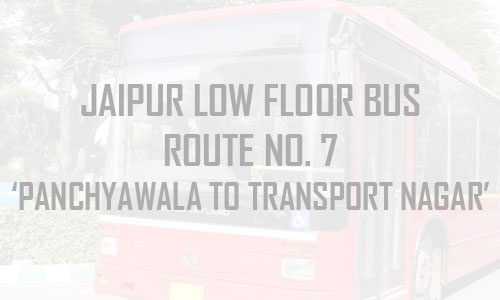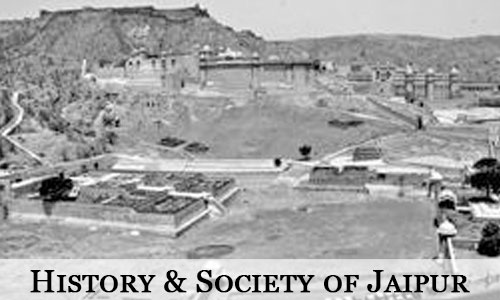Albert Hall - The Oldest Museum of Jaipur Rajasthan
Albert Hall Museum is the oldest museum of Jaipur, Rajasthan. The museum building is located in Ram Niwas Garden opposite New Gate. It also functions as the State museum of Rajasthan and is called the Government Central Museum as well. The Albert Hall Museum holds a rich collection of artefacts including paintings, carpets, ivory, stone, metal sculptures, colourful crystal works, etc.
History
The foundation stone of Albert Hall was laid in the year 1876 on February 6, during the visit of the Prince of Wales, Albert Edward to Jaipur. The building itself is named after him. But still there was an uncertainty on the main purpose of the building. It had yet to be decided how to put it to use.
Maharaja Sawai Ram Singh initially wanted the museum building to be a town hall. Some suggested putting it to cultural or educational use. Dr. Thomas Hobein Hendley suggested using the building as an industrial museum to encourage local artisans by displaying their crafts. The then Maharaja of Jaipur, Maharaja Sawai Madho Singh II liked his idea and decided to make it a museum showcasing the artwork of local craftsmen of Jaipur in 1880. The museum was finally opened for the public in 1887.
Architecture and Design
The Albert Hall building was designed by Sir Samuel Swinton Jacob, assisted by Mir Tujumool Hoosein. It features Indo-Saracenic architecture and stone ornamentation that is itself an integral part of the stuff at display. The building architectural style became a source of inspiration for several different classical Indian styles of design varying from Mughal architecture to Rajput architecture.
Not just the building and the artifacts but even the corridors of the Albert Hall were decorated with murals from the Ramayana and from the Persian Razmnama prepared for Emperor Akbar. Some of the murals portray stuff from different civilizations such as the European, Egyptian, Chinese, Greek and Babylonian civilizations. These murals were created to enable people to compare the art of different eras with their own and learn about history and art. The museum showcases the evolution of civilization and technology over centuries and is today one of the highly acclaimed museums of India.

Buddhist murals at Albert Hall Museum, Jaipur Rajasthan
What can I see in the Albert Hall museum?
The Albert Hall museum has a huge collection of artifacts that have archeological and historical value. Some artifacts date as back as the Indus valley civilization while some belong to the era marked by industrial revolution. The museum presents the lifestyle followed during various phases of the historical period. Visiting Albert Hall Jaipur is one of the best ways to see the cultural and technical evolution through different eras.
More about the Collections you can find here
Metal Art - Metal Art includes a huge collection of various vessel and figures made of different metals. Depending on their use and aesthetic requirements, these vessels are made of zinc, brass, silver and other metals. These vessels are unique pieces of pure beauty and one is compelled to salute the accomplished craftsperson of the yore whose excellent skills and unmatched expertise crafted the items that hold a distinct position in the Indian craft industry. Many of these vessels are adorned with various mythological paintings related to great epics like Ramayana and Mahabharata.
Pottery - It includes a large collection of some of the finest pottery pieces that showcases artistic heights and aesthetical skills. This collection also gives an insight into the lifestyle of royal era.
Jewelry - The jewelry collection shows various jewelry and ornaments that were worn by different classes of the society. One can easily find a distinct difference between the jewelry of royal people and that of people belonging to common classes. The jewelry of lower classes like peasants is the most basic in its overall appeal but nonetheless aesthetic.
Arms and Armoury - This includes a variety of weapons used in the battles of medieval era. The strategically designed weapons of ancient times are a perfect blend of beauty and performance. The double edged swords, Tiger Claws and other weapons like Bid cheer are formidable and beautiful at the same time. Gurj Mace, the mace with spikes capable of penetrating into protective amours, was really amazing armour of those times.
Coin Collection - The coin collection showcases coins from different eras. Right from the time of the Mauryas to the British India coins, the coins displayed here can leave you spellbound. The shapes and design of the displayed coins also communicate the difference in lifestyle of each era.
Other Collections
Other collections include miniature paintings, musical instruments, clay art, marble art, sculptures, carpet, furniture and fixtures, international art and ivory.

Albert Hall Jaipur at Night - Photography
How to Reach Albert Hall Museum?
From Airport
- Via Cab or Auto
- Distance from Jaipur Airport is 10.4 km via Jawahar Lal Nehru Marg (JLN Marg).
- Cab or Auto will take 25-30 min to reach Albert Hall.
- Charges for one side - 110-150 INR approx. via Auto
- Charges for one side - 140-180 INR approx. via Cab
- Via Public Transportation
- Bus service is available for Albert Hall. You will need to take an Auto and reach Jawahar Circle. From there you need to board bus 3A towards Choti Chaupad. Get down at Maharani College, from which Albert Hall is located at 8mins walking distance of 650m.
- The total time needed to travel by bus is 50-55 mins.
- For Tickets and Information - +91 141 223 3509
From Railway Station
- Via Cab or Auto
- Distance from railway station – 5.6km via Prithviraj Road
- Cab or Auto will take – 20-25mins
- Charges for one side via Auto – 70-110 INR
- Charges for one side via Cab - 100-150 INR
- Via Public Transportation
- Bus service is available for Albert Hall.
- Take an Auto to Khasa Kothi, from where you can take bus6A towards Jawahar Circle. Get down at Maharani College. From there Albert Hall is located at 8mins walking distance of 650m.
- The total time needed to travel by bus is 30-35 mins.
Other Information
- Timings – 9AM-5:30PM and 6:30PM-9PM every day except Tuesdays
- Closed on – Tuesdays and on Holi
- Parking Charges - 20-30 INR
- Contact – 0141 257 0099
Tickets – Types and Charges
General Entry Ticket
These tickets are available only at the premises of Albert Hall.
|
Indian visitor |
40 INR each |
|
Indian student |
20 INR each |
|
Foreign visitor |
300 INR each |
|
Foreign student |
150 INR each |
Composite Entry Ticket
This ticket is valid for 2 days and allows you to visit all or any of the following tourist attractions in Jaipur – Amber Fort, Albert Hall, Jantar Mantar (Observatory), Nahargarh Fort, Hawa Mahal, Vidyadhar Garden, Sisodia Rani Garden and Isarlat (Sargasooli). Composite Entry Tickets are available only at the premises of Amber Fort, Albert Hall, Hawa Mahal and Jantar Mantar (Observatory).
|
Indian visitor |
300 INR each |
|
Indian student |
40 INR each |
|
Foreign visitor |
1000 INR each |
|
Foreign student |
200 INR each |
Night Visit Entry Ticket
This ticket is valid for visiting Albert Hall during the evening hours from 6:30PM-9PM.
|
Indian visitor |
100 INR each |
|
Indian student |
100 INR each |
|
Foreign visitor |
100 INR each |
|
Foreign student |
100 INR each |
Audio Guide
|
Indian visitor |
114 INR each |
|
Foreign visitor |
171 INR each |
Note for Free Entry
- Free entry for children below 7 years of age
- Free entry for student groups from 10AM-12PM on recommendation of their respective institute
- Free entry for all visitors on the following days:
- 30 March – Rajasthan Day
- 18 April – World Heritage Day
- 18 May – World Museum Day
- 27 September – World Tourism Day












